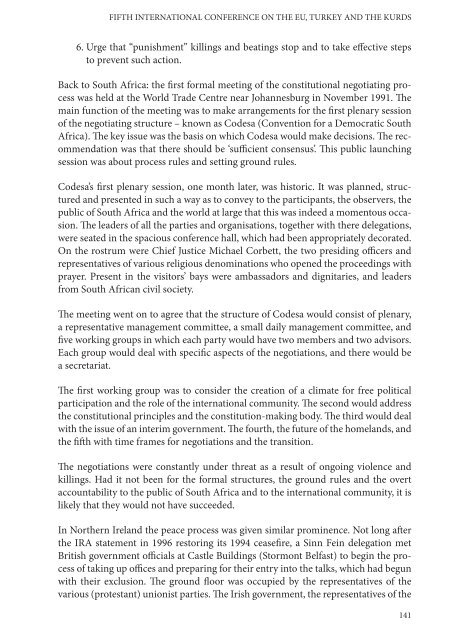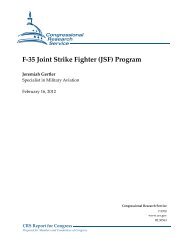FIFTH INTERNATIONAL CONFERENCE ON THE EU TURKEY AND THE KURDS
fifth international conference on the eu, turkey and the kurds
fifth international conference on the eu, turkey and the kurds
Create successful ePaper yourself
Turn your PDF publications into a flip-book with our unique Google optimized e-Paper software.
<strong>FIFTH</strong> <strong>INTERNATI<strong>ON</strong>AL</strong> <strong>C<strong>ON</strong>FERENCE</strong> <strong>ON</strong> <strong>THE</strong> <strong>EU</strong>, <strong>TURKEY</strong> <strong>AND</strong> <strong>THE</strong> <strong>KURDS</strong><br />
6. Urge that “punishment” killings and beatings stop and to take effective steps<br />
to prevent such action.<br />
Back to South Africa: the first formal meeting of the constitutional negotiating process<br />
was held at the World Trade Centre near Johannesburg in November 1991. The<br />
main function of the meeting was to make arrangements for the first plenary session<br />
of the negotiating structure – known as Codesa (Convention for a Democratic South<br />
Africa). The key issue was the basis on which Codesa would make decisions. The recommendation<br />
was that there should be ‘sufficient consensus’. This public launching<br />
session was about process rules and setting ground rules.<br />
Codesa’s first plenary session, one month later, was historic. It was planned, structured<br />
and presented in such a way as to convey to the participants, the observers, the<br />
public of South Africa and the world at large that this was indeed a momentous occasion.<br />
The leaders of all the parties and organisations, together with there delegations,<br />
were seated in the spacious conference hall, which had been appropriately decorated.<br />
On the rostrum were Chief Justice Michael Corbett, the two presiding officers and<br />
representatives of various religious denominations who opened the proceedings with<br />
prayer. Present in the visitors’ bays were ambassadors and dignitaries, and leaders<br />
from South African civil society.<br />
The meeting went on to agree that the structure of Codesa would consist of plenary,<br />
a representative management committee, a small daily management committee, and<br />
five working groups in which each party would have two members and two advisors.<br />
Each group would deal with specific aspects of the negotiations, and there would be<br />
a secretariat.<br />
The first working group was to consider the creation of a climate for free political<br />
participation and the role of the international community. The second would address<br />
the constitutional principles and the constitution-making body. The third would deal<br />
with the issue of an interim government. The fourth, the future of the homelands, and<br />
the fifth with time frames for negotiations and the transition.<br />
The negotiations were constantly under threat as a result of ongoing violence and<br />
killings. Had it not been for the formal structures, the ground rules and the overt<br />
accountability to the public of South Africa and to the international community, it is<br />
likely that they would not have succeeded.<br />
In Northern Ireland the peace process was given similar prominence. Not long after<br />
the IRA statement in 1996 restoring its 1994 ceasefire, a Sinn Fein delegation met<br />
British government officials at Castle Buildings (Stormont Belfast) to begin the process<br />
of taking up offices and preparing for their entry into the talks, which had begun<br />
with their exclusion. The ground floor was occupied by the representatives of the<br />
various (protestant) unionist parties. The Irish government, the representatives of the<br />
141





